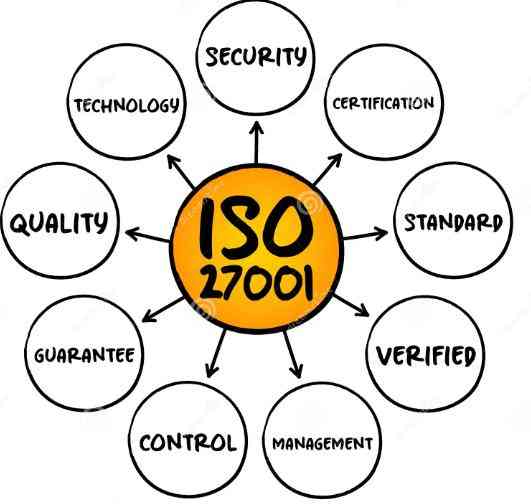|
Ref. No. : ISO/R 945-1969(E)
IS0
I N T ER N AT I ON A L O R G A N I Z AT I ON FOR S TA N DARD 1 ZATl O N
IS0 RECOMMENDATION
R 945
DESIGNATION OF THE MICROSTRUCTURE
OF GRAPHITE IN CAST IRON
1st EDITION
January 1969
COPYRIGHT RESERVED
The copyright of IS0 Recommendations and IS0 Standards
belongs to IS0 Member Bodies. Reproduction of these
documents, in any country, may be authorized therefore only
by the national standards organization of that country, being
a member of ISO.
For each individual country the only valid standard is the national standard of that country.
Printed in Switzerland
Also issued in French and Russian. Copies to be obtained through the national standards organizations.
---------------------- Page: 1 ----------------------
BRIEF HISTORY
The IS0 Recommendation R 945, Deslgnation of the microstructure of graphite in cast iron,
was drawn up by Technical Committee ISO/TC 25, Cast iron, the Secretariat of which is held by
the British Standards Institution (BSI).
Work on this question by the Technical Committee began in 1962 and led, in 1964, to the
adoption of a Draft IS0 Recommendation.
In April 1967, this Draft IS0 Recommendation (No. 1196) was circulated to ail the IS0
J
Member Bodies for enquiry. It was approved, subject to a few modifications of an editorial nature,
by the following Member Bodies :
Belgium India Romania
Brazil Ireland
South Africa, Rep. of
Canada Israel Sweden
Chile Italy Switzerland
Czechoslovakia Korea, Rep. of Thailand
Finland Ne the rlan ds Turkey
France Norway U.A.R.
Germany Poland United Kingdom
Greece Portugal Yugoslavia
No Member Body opposed the approval of the Draft.
The Draft IS0 Recommendation was then submitted by correspondence to the IS0 Council,
which decided, in January 1969, to accept it as an IS0 RECOMMENDATION.
-2-
---------------------- Page: 2 ----------------------
ISO/R 945-1969(E
IS0 Recommendation R 945 January 1969
DESIGNATION OF THE MICROSTRUCTURE
OF GRAPHITE IN CAST IRON
1. SCOPE
This IS0 Recommendation gives an international designation of the microstructure of graphite in
cast iron. It is not intended as a basis for acceptance specifications.
2. GENERAL
2.1 When examining iron-carbon alloys under a microscope the graphite occurring in these alloys
can be classified by
its form (designated by Roman numerals, see Fig. l),
(a)
its distribution (designated by capital letters, see Fig. 2),
(b)
its size (designated by Arabic numerals, see Figures 3 to 6).
(c)
2.2 The three series of reference diagrams included in this IS0 Recommendation, for evaluating
the type of graphite, form a basis for such a classification. The characteristic features of the
graphite which occur are designated by letters and numerals. For this purpose, microstructures
of graphite are arranged side by side in the series. Form, distribution and size of the graphite
observed are determined by comparison with the diagrams and the allocation of the same
classification as the diagrams that resemble them most closely. This method permits quick
identification of the graphite, promotes mutual understanding between technicians in this
field, permits clear representation of the findings, facilitates statistical analysis and saves a
vast amount of photographic work.
2.3 The comparison of the graphite observed with the three series of reference diagrams in
Figures 1 to 6 does not give any information on the suitability of the iron-carbon alloys for
any particular service.
3. SAMPLING AND PREPARATION OF SPECIMENS
3.1 When taking specimens from the casting, attention must be paid to the location, to the wall
thickness, to the distance from the surface and to the presence of chills and the like. The
location of the surface examined should be carefully recorded in any report.
3.2 The area of polished surface should be sufficient to give a true representation of the graphite
distribution. Attention should be paid to the careful grinding and polishing of the specimens
in order that the graphite particles appear in their true form and size. The examination of the
graphite under the microscope is usually carried out on the unetched polished section, though
final etching is recommended in the case of some special alloy cast irons, for example those
containing high silicon.
-3-
---------------------- Page: 3 ----------------------
ISO/R 945-1969(E)
4. MICROSCOPIC EXAMINATION
4.1 The polished specimens should be viewed under a microscope so that the entire polished area
may be examined. A comparison should first be made with the reference diagrams for the
graphite form and distribution (see Figures 1 and 2) and the microstructures observed should
then be identified from the corresponding reference diagrams. Following this, the size of the
graphite particles is determined at a magnification of 100 diameters, by reference to
Figures 3 to 6 inclusive and/or Table 1.
Examination under the microscope can be carried out by direct observation or by projection
4.2
on the ground glass of the microscope. The field of view should have approximately
...














